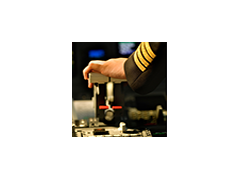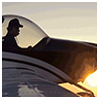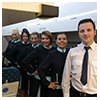At 2fly Aerodynamics we are proud of our pioneering history,our distinguished present and our exciting future.
Founded in 2002 Aerodynamics Malaga is one of the leading schools for pilot training in Spain.
In the 15 years that we have been operating we have trained pilots to the highest standards that are now working all over the globe as first officers and captains for the world’s major airlines.
As an established ATO with established experience, we have a close working relationship with one of the fastest growing airlines in Europe.
Today 2FLY Aerodynamics owns 17 airplanes, more than 1600m2 of training facilities and 1200m2 of hangar space in La Axarquía aerodrome with its own aircraft maintenance service provided by our in-house maintenance company - Málaga Air Maintenance.
All Aerodynamics Career Academy ATO courses have been fully approved by EASA.
Licenses issued by 2Fly Aerodynamics are recognised by the European unio.
2fly Aerodynamics is one of only 7 recognised UK CAA official examination centres across the globe.
The best flying weather in Europe allowing for courses to be completed in the shortest possible times
Training in historic Malaga on the Spanish Riviera is an experience you will NEVER forget
With average pass rates of 99% for CPL and 98.5% for IR, some of the highest in the Industry
2Fly Aerodynamics operates a modern and well maintained training fleet of 17 aircraft at its base in Malaga.
Latest generation flight simulator
Experienced instructors
All our team members are fluent in Spanish and English
2FLY Aerodynamics is an official UK CAA Examination Centre (for PPL and ATPL)
The European aviation market is currently experiencing a rapid growth, with airlines constantly searching for qualified pilots. Over the next 20 years European airlines are forecast to acquire more than 7,300 new aircraft, thus creating even more jobs for air crew.
Air transport makes a key contribution to the European economy, with more than 100 scheduled airlines, a network of over 400 airports, and 60 air navigation service providers. The aviation sector directly employs between 1.4-2 million people and directly or indirectly supports 4.8-5.5 million jobs. Aviation directly contributes more than €110 billion to the European GDP. Some 900 million passengers departed or arrived at EU airports in 2014. linking people and regions, air transport plays a vital role in the integration and competitiveness of Europe, as well as its interaction with the world.
Boeing projects a worldwide demand for 38,050 new airplanes over the next 20 years, an increase of 3.5 percent from last year’s forecast. Boeing released its annual Current Market Outlook (CMO) on June 11th, estimating the total value of those new airplanes at $5.6 trillion.
Single-aisle airplanes will comprise the majority of deliveries, representing a 79 percent share of total deliveries.
How much can a pilot earn from the beginning of their career to a few years down the line?
Salaries vary according to the airline that you are employed with, the type of aircraft you are flying and your experience.
The starting salary for a newly qualified first officer working for a small operation may be around €28,000. Starting salaries for those in larger companies are higher at around €29,000 to €31,500.
Starting salaries for national carriers (e.g. British Airways, Iberia) will be higher.
Salaries for more experienced pilots range from €48,000 to €63,000 in a first officer role.
The starting salary for a captain with a medium-sized airline may range from €63,000 to €103,000, while those with the major operators could earn from €130,000 to more than €185,000.
A pilot’s salary is often incremental, rising with each year of service with the company.
Benefits usually include a pension scheme and various allowances. These can include: free housing, car, petrol, private schooling for children, medical insurance and flights whilst working abroad.
Being a pilot is not a nine-to-five job and unusual working hours should be expected. The length of a working day varies depending on the company and route but can range from three to twelve hours. The start times of a day will often differ depending on the route, sometimes beginning in the early morning and sometimes late at night.
As pilots can often be on standby duty, they generally need to live near the airport wher they are based so they can get there at relatively short notice.
Pilots are restricted to 900 flying hours per year. On scheduled airlines, the workload is spread evenly throughout the year; on charter airlines, the summer months are busier than the winter months.
The majority of commercial airline pilots are men, but more women are now entering the profession.













